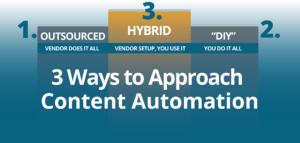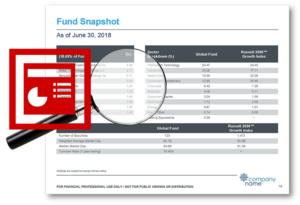[Podcast] The Future of Sales Enablement for Asset Managers with Matt Suggs

Listen to our guest, Matt Suggs, discuss the future of sales enablement — “Evolved Selling”.
Matt Suggs, EVP of Sales and Customer Success at Mediafly, sat down with myself and Synthesis CEO, John Toepfer, to discuss the future of sales enablement.
Matt is A 20-year software sales veteran with experience working for industry giants like Oracle and SAP Ariba. In this episode, he offers insight into why B2B buyers hate being sold to and how asset managers can use technology to provide a truly engaging and compelling client experience. Some of the topics we touch on in this episode include the four pillars of “evolved selling”, why mobile technology lines are becoming blurred, the true meaning of personalization, and how interactive experiences are directly impacting sales success and bottom-line revenue. We hope you’ll take away some useful insights from this episode.
Thanks for listening, and enjoy!
The following is a transcription of this podcast:
Emilie
Matt
Absolutely Emilie. So, Mediafly was founded on a principal that most buyers, the people that purchase things from our customers on a daily basis, they actually hate being sold to. That’s because many of the interactions that they have with the salespeople from various companies don’t really address their business needs. The content is not personalized, the information that they had to get or the flow of information is off and very one-sided. They end up educating the salesperson and don’t get much insight from the salesperson. So, by leveraging our technology, we feel that some of the world’s most admired companies allow those interactions to actually shape the conversation in real-time rather than relying on a boring, generic pitch that was created in a hotel room the night before. So, Mediafly’s users are more effective in each meeting with their customers because they engage them with insights that are directly relevant to those meetings and we call that evolved selling.
So, we’re helping large corporations basically escape from a world of linear-pitched accent and sale sheets and things like that to dynamic interactions with their client that are more relevant and full of real time insights through those customers.
John
Matt, are there industries that this type of improved or evolved selling seems most well-suited to or is it something that crosses all industries?
Matt
Well, we have customers in a wide variety of industries. We have media and entertainment clients. We’ve got a large number of consumer packaged goods clients, food and beverage companies and then a lot of customers in more regulated industries like financial services, insurance, healthcare. So the solution has a very horizontal appeal but the requirements for each one of those industry segments are a little bit different.
John
Now this is categorically mobile technology. The type of thing that a sales rep carries around on an iPad or a similar device. Is there a type of salesperson who seems prone to want to have that type of material?
Matt
Well you know, for us when we talk about mobile technology, the lines are getting more and more blurred every day so, for some customers, they were referring to mobile as being the laptop that that salesperson is using in the field. We do have an expertise in enabling customers on what most people consider to be mobile platforms like IOS, the Apple products as well as Android but I would say over half of our customers use Mediafly on laptops and with things like the Surface Pro coming out, there are some conversions between handheld laptop experience and tablet experience.
John
So the idea is to make the sales rep more nimble on the feet, able to react and respond to the conversation that they’re actually having with a client versus the one they thought they were going to have with the client. But that in some ways flies in the face of corporates who through internal complaints, concerns or regulatory complaints and concerns are really uptight about giving the salesperson too much latitude, too much room for creativity. How do you respond to that type of concern when you’re speaking to a large client?
Matt
Yeah, so I really think that this is where the partnership between Synthesis and Mediafly is going to have the biggest impact because what sales leaders have been doing for the past 30 years is sending salespeople to sales training events, internally and externally where they teach those sales reps that they must personalize all the messaging and content. So, for many salespeople that means changing the presentation materials that are delivered by the marketing department. And so that’s the experience that the salesperson has been basically trained and weaned on. So, I think that the challenge is the marketing department, at the same time, is trying to consolidate all these mixed messages and really keep the salespeople on message with compliant content. And so what the partnership between Synthesis and Mediafly allows large companies to do is basically have some ability to make changes but those changes are pre-approved by the marketing team. They can personalize the content but in a controlled way and then deliver that content in the most compelling way using the Mediafly platform.
John
How do you train salespeople on the new way to personalize and speak to your audience that’s not simply putting graphics and logos that feel personal but don’t mean anything other than the fact that you had time to steal something off of their website?
Matt
I think that we’ve got a little bit of an edge there, John, it’s been created by tool like PowerPoint and Windows and that using Synthesis Decks™ to create the content is actually a lot easier than what they do today. And, they can create content that looks better from a salesperson perspective, it looks better and it’s faster for them to create. So, while we are introducing a new process to them, we’re also keeping their abilities to do things like start with their old deck, you can do that using Mediafly and Synthesis. We’re not changing that capability. I think we’re actually making it a lot easier and faster and efficient for people to make changes that are also still compliant with what the marketing team’s doing. So, from a training perspective though, I think we’re actually in a good position there because our customers, the Mediafly + Synthesis customers, will see a huge advantage in the time that it takes to actually create these compliant decks.
John
One of the things we’ve in deploying the Synthesis solution for large clients is the need for a very committed internal sales effort to convince the sales people this new way is better, try it a few times to get used to it, you’re going to like it and some very significant promotional materials ranging from paper flyers, email flyers, seminars, webinars, bulletins that this is coming. And having to really market it internally just like you would to an external client base. Because sales people, like many of us, are not prone to change and you have to see, you know, put real effort into encouraging them to try the change and then embrace the change. Do you see experiences like that being required when you’ve been deploying your solutions?
Matt
Absolutely, and I would say that it expands far beyond just media solutions, it’s really anytime that you roll out a new software capability. I’ve been working in the enterprise software space, for companies like Mediafly, Oracle and SAP Ariba for nearly 20 years and those customers that do put an internal marketing effort behind their projects, those are the projects that are most successful. In our case, at Mediafly, some of our most impressive deployments are companies like Pepsi Co and Miller Coors where they definitely put some effort into the marketing solutions for, you know, to their sales people marketing the success stories that they have in major markets and with major groups that have used the tool really effectively and making sure that they’re sharing those wins with the rest of the team.
And so, the other advantage, I think, for customers that select Mediafly and Synthesis is there’s this long term relationship that’s built through our customer success teams, our joint customer success teams, it goes beyond implementation and technical support is really focused on advocating for the client and showing them how to achieve the success that they were banking on in their business cases when they justify the purchase of these solutions.
John
So in selling the Synthesis Decks solution into sale organizations at major financial firms, we very often encounter an incumbent process that has to deal with marketing creating sales presentation materials and then essentially losing control of them as they move over to the sales organization with very little record keeping and very little consistency of how the material is used opportunity to opportunity or sales rep to sales rep. So, the initiative is really about the marketing organization trying to figure out a way to get marketing compliance controls of the materials without creating something that’s so completely complicated that the sales organization doesn’t reject the use of it. So in our world, we’re placing an incumbent process that is essentially Powerpoint. What are you replacing in your world? What is the incumbent process that Mediafly is replacing?
Matt
Well, it’s a couple of things. Most companies use Powerpoint, but we’re also replacing content management systems and portals where people sit through thousands and thousands of documents trying to find the right presentation as the starting point for what they create. I would say that the number one thing we’re replacing is people just creating content on their own in an uncontrolled way and sales people don’t come to work with that objective of I’m going to go create rogue content today. They do it out of necessity and likewise, the marketing team doesn’t come to work thinking how can I make it harder for the sales people to do their job on a daily basis. But that friction does exist within our customers.
And so we’re typically replacing portals, shared drives, content management systems that people don’t like to use and we’re also helping them combine multiple types of content into seamless presentations. So, a lot of times what people will have is that they’ve got, you know, they’ve got PDF’s and sell sheets and things like that, that they use for part one of their sales process and then they’ve got presentations (Powerpoints) and then they might have some video content. Combining those things is very hard to us when you’re just using the desktop tools provided by Microsoft but within Mediafly, it’s literally drag and drop, point and click type of experience to create a seamless presentation using all those types of materials.
John
How often are you finding homegrown systems that are attempting to provide a mobile sales experience and the need to replace that or improve that technology?
Matt
So we used to run into homegrown applications quite a bit, I’d say four or five years ago, they were very popular when things like the iPad first came out. A lot of sales organizations looked to homegrown solutions as a way to push content out to those devices. With the development of sales enablement applications and mobile enablement applications like Mediafly, the cost of doing homegrown now, far exceeds what it’s going to cost you to purchase a solution from a solutions provider like Mediafly and Synthesis. So we’re seeing that a lot less than we used to. Many of the solutions that we were replaced in our customers are those old legacy systems, either systems that they tried to make mobile or systems that just weren’t mobile at all but they were things that… might be a portal, a sales portal where they would put up all their content really a place that download content locally to a machine and then go out and doctor it up and change it in an uncontrolled way and present it to their customers.
John
Most of the systems I’ve seen like that operate principally off of static material, really it’s a way to share fact sheets and PowerPoint materials. I understand your system allows much more dynamic sets of material, much more interactive and multimedia. What are some good use case stories of how you’re using interactive and multimedia capabilities for clients?
Matt
Yeah, so we have customers that do things you might call guided selling so as their interactive experiences whereas I’m talking to the client, I’m collecting some input from the client and that input informs the rest of the conversation with the customer. So an example of that would be you know, like a financial planner, could be collecting content from a client and that’s informing what solutions that financial planner would suggest to that customer. We have, in the case of SAP Ariba, they have a discovery process where they ask the client about their business, about the areas of spend they have within that business and it overlays some metrics that SAP Ariba knows already. And that basically helps create a playbook for that customer. We’ve also got cases in the consumer package goods industry where the customer provides some input during the presentation and that will later be used to build out the business case for promotion or the addition of products to their shelves in stores or something like that.
John
Tell us your “battle of the taps” story. I’ve always liked that one.
Matt
Well on one of our best customers is Miller Coors and they came to us several years ago when, you know, obviously in the beer industry in the United States, craft beers have been perforating all across the bars and restaurants in America and they’re taking over the tap handles. Many of these restaurants they have a changed number of tap handles but the number of beer producers competing for those tap handles has exploded. And so, what Miller Coors found out when they did their marketing research, was that a Miller light or Coors light drinker is more loyal to their brand, drinks more beer and drinks it faster than they do craft beer because it’s, you know, less filling and it tastes great and they actually drive more revenue and drives more margin for that restaurant or bar owner.
So, the solution that they rolled out for them actually allows you to plug in what’s on tap and the distributor for Miller Coors goes out and does this. They plug that information into this tool and it builds out that set of tap handles. Graphically, it’s literally tap handles on the page and it allows them to somewhat if analysis. What if we switch up this low-performing craft beer for, you know, a Coors light, Miller light, Blue Moon or one of the group of products.
And it shows them the financial impact of making that change. The beer business is very relationship based in the United States. It’s very focused on brand marketing. They’ve gone from relationship selling and kind of an emotional purchase to one that’s based in dollars and cents and this has had a huge impact on their business where they had seen years of declining market share on Miller light and Coors light and that trend has been reversed using the Mediafly product, which they call “building with beer”.
John
I love that story because it maps directly to the asset management industry where asset managers have fleets of wholesale sales reps who are visiting intermediaries, financial advisors and RIA’s and convincing them that the product line that they have to offer will make the intermediary more money if they pitch it, versus whatever may be the trendiest path in the industry and it is an industry that’s driven by trends, kind of like the beer industry. And being able to pitch interactively and convincingly to the intermediary that this is the product line you want to sell and not that other one. That takes both personal persuasion and visual interactive evidence to help make that case and I think the story really conveys… translates very well between those two very different industries.
Matt
Yeah, absolutely.
Emilie
So, Matt, you guys at Mediafly talk a lot about Sales 2.0, or next gen selling, and you have coined this term “evolved selling.” Can you talk a little bit about what that is?
Matt
We look at evolved selling as being the aspiration for our clients to try to move away from the static presentations materials and content, to something that does real change the game for them. Help them sell more effectively, engage their clients, and ultimately create a world where those clients actually like being sold to.
And so we think of it as consisting of four main pillars. And the first one is dynamic, so the ability for sales people to access and assemble content very quickly, on the fly, either before or during their meetings with their customers. And the second major area is that the solution must be interactive, meaning that as I’m speaking to the client and they’re responding to my presentation that I’m actually able to capture and clip from them and that’s used to guide the discussion. Very much like the conversation we just had around Miller Coors.
Another area that’s really exciting for our clients is the ability to engage their customers with aided driven insights. So we call that pillar informed. So the way that they engage with their clients is informed by either data that they gain from their systems that they have, or maybe from some third parties. Some of our consumer packaged goods customers use point of sale data from Nielsen, and that data is pulled in in real time, in front of the client, to show the impact of promotions and programs that they are selling to that client in the moment.
And then the last area, the last pillar, is that we feel the evolved selling solution should be integrated and we mean integrated back to your CRM system, whether that’s salesforce.com, or Microsoft Dynamics, or [inaudible 00:02:56] and other systems that help, that you use for sales execution. So that I basically know what was presented to that client and I can track the impact of that information that was presented to that client to actual transactions with the customer.
So ultimately, what we want to do through our integration is provide the marketing team with the actual monetary impact of the content that they create for the sales team. So those four pillars make up what we call evolved selling.
John:
You’ve clearly got a lot of thought put in this and you really studied the market. Is there a particular place you went to, to develop this knowledge base of what the market and how it needs to improve?
Matt
Well we have surveyed both buyers and sellers in the B2B space, and through that marketing study that we did we were able to determine some very interesting facts, like 73% of B2B buyers are more likely to purchase from the first seller that provides them with real insight to their business. So being first and being first with actual valuable information to that customer is really critical to being successful in the commercial organization.
We’ve also found other aspects about that B2B buyer seller relationship that you can find in a thought leadership paper that was published through Forester last year.
John
That paper’s a very interesting read, I highly recommend downloading it if you’re interested at all.
Emilie
Agreed. Alright guys I think we’re out of time for today, so we’re going to wrap up here. I just want to say thank you to John, again for hosting with me. And thank you Matt for being here with us. Matt is again, he’s EVP of sales and customer success at Mediafly. And you can find Matt on LinkedIn and you can check out Mediafly at mediafly.com. Thanks again, Matt.
Matt
Alright, thank you very much.
Did you enjoy this Podcast?
Subscribe on iTunes or Google Play to get all the episodes for free!
 From the Blog: Why Pitch Decks Should be Created by Sales, Not Marketing |  From the Blog: Obstacles Salespeople Face when Trying to be Customer-Centric |  From the Blog: The 3 Ways to Approach Content Automation |




 Compare the Top 3 Finserv Content Automation Vendors [White paper]
Compare the Top 3 Finserv Content Automation Vendors [White paper] Create Pitchbooks the Drive Sales [White paper]
Create Pitchbooks the Drive Sales [White paper] Build vs. Buy: Should Your Financial Services Firm Outsource or Insource Marketing Technology? [White paper]
Build vs. Buy: Should Your Financial Services Firm Outsource or Insource Marketing Technology? [White paper]  10 Tips for Rebranding your Fund Marketing Documents [White paper]
10 Tips for Rebranding your Fund Marketing Documents [White paper]




